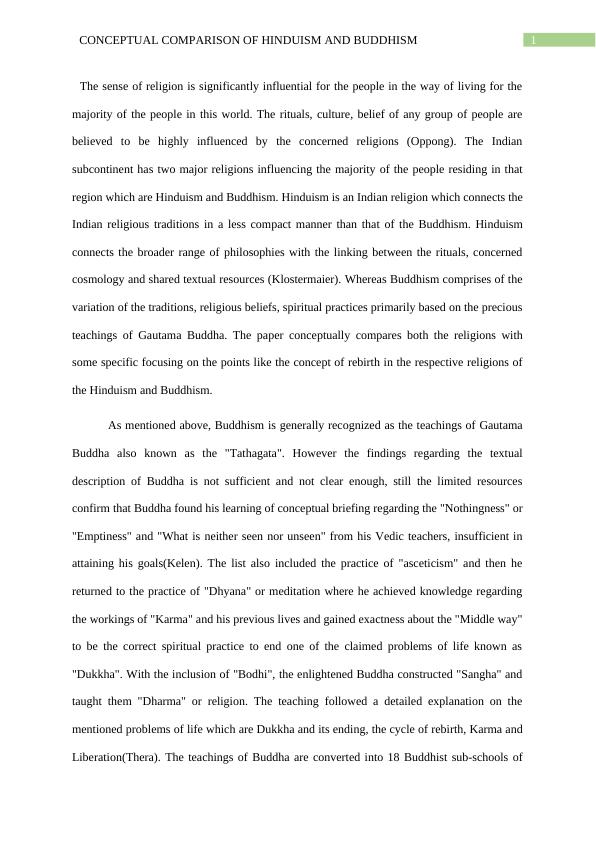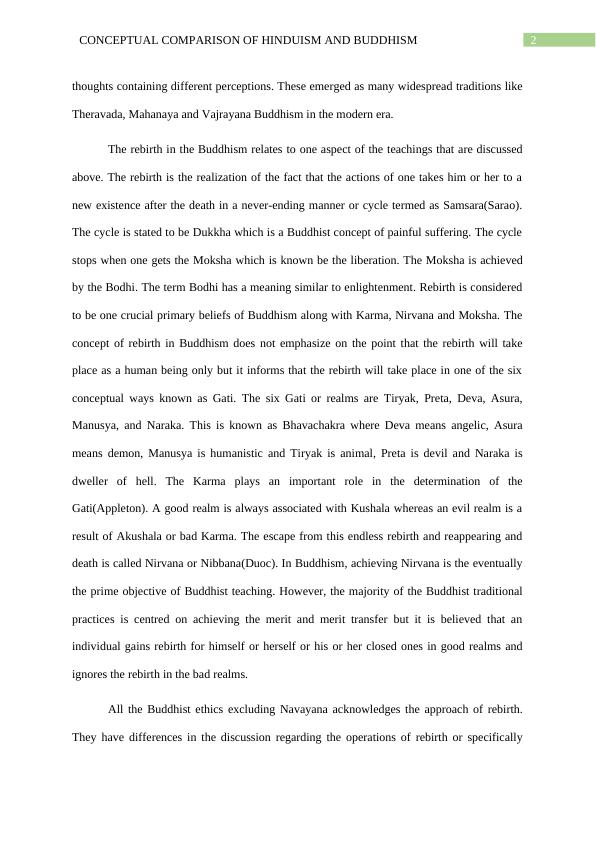Conceptual Comparison of Hinduism and Buddhism
9 Pages2356 Words141 Views
Added on 2023-06-10
About This Document
This paper conceptually compares Hinduism and Buddhism with a specific focus on the concept of rebirth in both religions. It discusses the differences in their approach to the afterlife and rebirth, the role of karma, and the existence of the soul.
Conceptual Comparison of Hinduism and Buddhism
Added on 2023-06-10
ShareRelated Documents
End of preview
Want to access all the pages? Upload your documents or become a member.
Compare and Contrast Essay Hinduism and Buddhism
|5
|652
|255
Multiple Choice Question Answer 2022
|7
|1177
|21
Comparison of Hinduism and Buddhism in Indian Society
|4
|695
|341
Comparison Between Buddhism and Confucianism
|5
|801
|34
Buddhism and Hinduism: A Comparative Study
|11
|3343
|380



